Pachydactylus, known commonly as “thick toed geckos” are small, arboreal geckos native to southern Africa, extending into eastern Africa. Many of them live in extreme habitats and, as you’ll read below, the genus includes a very wide range of body types and habits. As always, the responders answered the following five questions:
- What species are you keeping?
- What got you interested in this species and where did you get your first one(s)?
- How are they set up? Describe your enclosure
- What do you find most interesting about them?
- What do you find to be the biggest challenge?
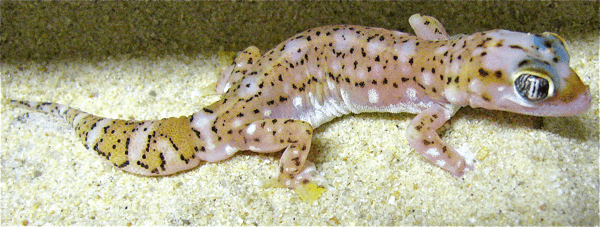
Justin Morash
I am currently keeping Pachydactylus rugosus, Pachydactylus caraculicus, Pachydactylus maraisi, and will be receiving some Pachydactylus latirostrus very soon. In that past I have also kept Pachydactylus fasciatus, Pachydactylus tigrinus, Pachydactylus (Palmatogecko) rangei.
The first couple of species I worked with, P. fasciatus and P. tigrinus, were honestly impulse buys when I worked at a pet store years ago. These geckos were neat little animals, and when a small group of each came into the store, they came home with me right away. They were great little projects to take home and toy with, and very easy to breed, but they never kept my attention for too long unfortunately (at that time I was more concerned with snakes and monitor lizards). Now years later, I have gained more of an appreciation for the little stuff overall, especially geckos.
Rugosus is the gecko that really turned my attention to Pachydactylus. I love bumpy, rough skinned geckos, and rugosus is the pinnacle of those rough skinned geckos in my opinion. Not only are they just out there in terms of their appearance, but their personality is outrageous as well. They stalk around their enclosure with their tails held high, they are bold and cryptic all at the same time.
I am also lucky enough to live very close to a great gecko breeder, Neil Meister. Upon my initial visits to his home picking up other purchases, his rugosus were one species he made an effort to point out to me. And it was that, my ability to see them first-hand, that sealed the deal for me. Honestly, if it wasn’t for that, I likely would have never spent the money I did on the original rugosus, nor would I have likely batted an eye at many of the other species.
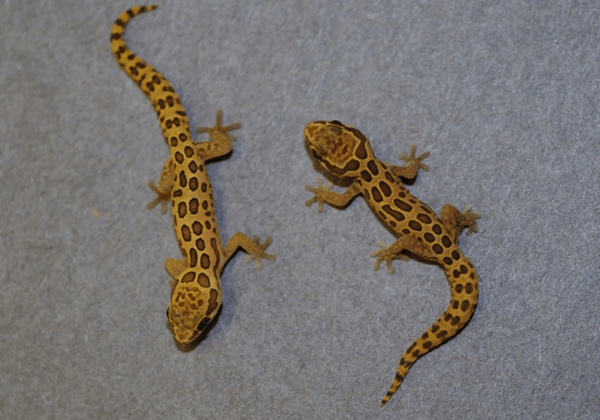
I keep my Pachydactylus in a couple of different ways. For my pairs of the medium to large semi arboreal species like rugosus or, in the past, fasciatus, I used 12”x12”x18” glass terrariums, set up with cheap, washed play sand, a small pile of rocks in the corner, some larger cork rounds or a similar piece of driftwood, and then I decorate a bit with smaller sticks. I will always dust the rocks with calcium powder so the females can self dose themselves when breeding. If my animals aren’t quite breeding size yet, I typically just make a divider from corrugated plastic sheets for the 12”x12”x18” and separate the male and female that way. I just do this for organizational purposes. The small species, like caraculicus, (or for the maculatus I’m hoping to receive soon) are housed in 12”x12”x12” glass terrariums, set up similarly to the taller enclosure. Some of these enclosures are also decorated with potted succulants, which is just for personal preference, as I like a little greenery. I see no real benefit to doing it, or not doing it. These terrariums are heated with a small halogen “under cabinet lights” and I also have heat tape along the back for when the lights go off at night, however they rarely need to kick in. Finally small terrestrial species like rangei or latirostrus, are set up in small clear plastic “faunarium” like containers, which are 18”x12”x6.5”. I like these because they have a built in divider, which is nice if you need to separate the male for a little bit. These enclosures easily fit a pair or trio of species like rangei or latirostrus. They are also set up with play sand, usually just decorated with some flat rocks, cork flats, and upside down clay saucers. I use the saucers to give my geckos water by misting the inside of it, and the sand below so water condenses in droplets. These set-ups are heated with heat tape on a dimmer, which seems to be keeping the geckos happy.
I really just like having a variety of geckos, but it is hard if having a collection of geckos from so many different climatic conditions, or keeping larger species like Uroplatus and the big New Caledonian species. Pachdactylus is one of those groups of geckos where you can really keep a wide variety of different geckos (in terms of size, shape, colour, pattern, and behaviour), in a relatively small space. None of them are all that large, and most have pretty similar climatic requirements. I will admit, I’m just beginning to dive into these animals. I have kept a small numberof species, even fewer since really getting into geckos, but lately, my goals are pretty focused on small desert dwelling geckos such as the Pachydactylus species.
My biggest challenge by far has been obtaining these geckos. I live in Canada, and there are quite a few great gecko breeders, in fact, there is one who works with a lot of African species. Yet the variety just does not exist like it does in the United States and in Europe, especially with South African geckos. One can only arrange so many US orders, while only getting half the animals one was hoping to get, before it becomes a tad financially draining and time consuming. With that said, I will continue to do these orders and to build my collection the way I want it to be.
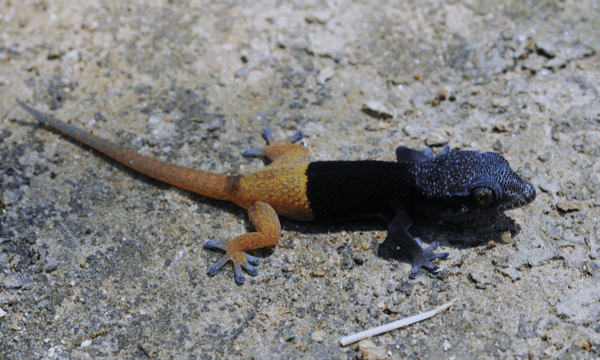
Oliver Kuepper
I am currently caring for the two webfoot species of the Genus Pachydactylus: the rangei, and the vanzylii.
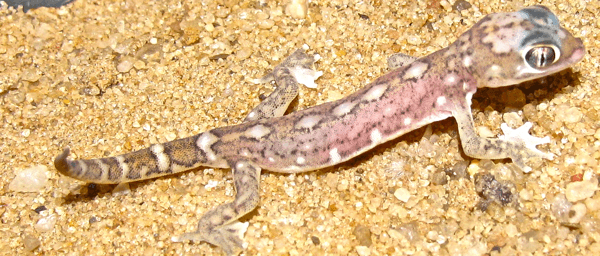
Simply enough, my interest in the Namibian webfooted geckos sparked when I first saw pictures of them online. This is usually how I get drawn into any given species. I really liked how their feet looked, and how they resembled the feet of ducks despite that this feature helps them navigate and dig through sand. Once I get an enthusiasm for a species, I usually will do whatever it takes to obtain them, and luckily enough I had a friend that worked with these species who sold me some animals.
The Pachydactylus I have are kept the same way as I would keep any other desert dwelling species. I keep it simple, and as clean as possible. I use shoe box belly heated rack systems with sand substrate measuring about an inch in depth. Inside each bin I provide the gecko with two hides; one being directly over the heat tape, and the other being as far away from the heat as possible on the cooler end. I also keep groups of P. rangei in sweater box sized enclosures with numerous hides throughout the bin. I find that they will do great, and produce prolifically in 1.3 arrangements.

I find the most interesting thing about these two species aside from their comical appearance to be their personalities. For the most part, they are usually very calm and collected even when I am cleaning their tubs. I like how they aren’t too skittish if picked up, and breeding them is like clockwork, and very straightforward. They are both very rewarding to keep. I really enjoy species which are aggressive feeders as I like to watch my geckos eat! Both of these geckos are that, and they are not too shy about eating in front of me.
These two species haven’t been too much of a challenge for me until this recent breeding season. The past several years have been great. The geckos produced, and raising the young wasn’t too difficult. This season has been trickier with the hatchlings in regards to the P. vanzylii. I have had a much higher mortality rate than in past years, but to try and combat this I have acquired some new bloodlines in hopes to alleviate this problem. Also, I have had some problems with deaths during brumation. I understand that these geckos will not live forever, but these challenges can definitely be frustrating at times. On the other hand, they can also be great tools in learning what to do, and what not to do with a species.
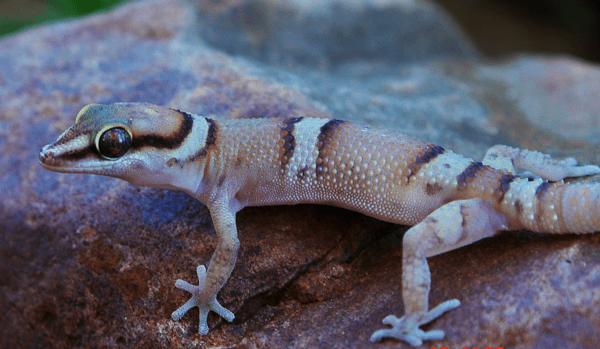
Jon Boone
I keep P. affinis, atorquatus, bicolor, capensis, caraculicus, carinatus, fasciatus, formosus, gaiasensis, geitje, haackei, kladaroderma, latirostris, maculatus, maraisi, mclachlani, monicae, montanus, namaquensis, oculatus, oroephilus, parascutatus, punctatus, purcelli, rangei, rusosus, scherzi, scutatus, serval, sp. (3 different and unique, not described forms), tigrinus “Mozambique”, tigrinus “Zimbabwe”, tsodiloensis, vanzyli, visseri, weberi, werneri. I have also kept and bred mariquensis, sansteynae, and kochi (now considered Colopus kochi),
I first became interested in Pachydactylus in 1983 when I acquired my first Pachydactylus latirostris from a dealer in PN. A veterinarian friend of mine in IL also kept P. maculatus and P. weberi during the same time. I have also travelled to Africa 10 times over the course of the past 2 decades and have witnessed several of these in nature that has provided me with good insight into how these creatures exist alongside many other unique African reptiles.
The enclosure type that I choose for each Pachydactylus species is correlated directly to each species’ limb and toe structure. Essentially, there are 2 types of Pachydactylus – ground dwelling and rupicolous (rock dwelling). The ground dwelling forms (ex. latirostris, labialis, mariquensis, rangei, vanzyli) are kept in a dry vivarium with fine-particle river sand and with various fixtures for ground hides.
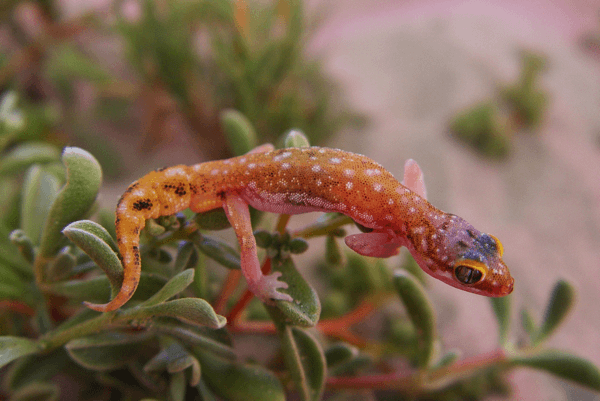
The rupicolus forms are kept with the same substrate with granite, slate or other similar types stood against terrarium walls. These cages tend to be smaller than the ones used for ground dwelling forms, due to the nature of the rock-dwelling forms who eventually prefer to use 1-2 crevices for 23.5 hours of each day! Historical and ecological factors have dictated that these forms be more gregarious, and thereby more tolerant of multiple animals in a single rock crevice, than most other genera of geckos. Newborn specimens of most species are radically different from the adults in coloration and suggest that these geckos utilize optic cues while establishing who and what is allowed in the crevices, whereby the juveniles being colored differently (and smaller) are deemed as “no threat” and allowed.
Temperatures of 75-95F should be used for nearly all species, and the further south that a given Pachydactylus species occurs in nature would be a good indicator as to how long that form should be cooled/hibernated during the non-breeding season. So, species like P. caraculicus that live in Angola and Namibia do not need the type of winter that Pachydactylus maculatus would naturally need. Most of the species that would naturally range into South Africa do need some sort of “cooling period” where the animals are kept at temps of about 60-70 F. for 6-12 weeks. I use crickets for about 90% of their diet and greatly vary the diet of the crickets that would correlate to what is most needed with egg producing females during a given time of the breeding season. So, a more plant-based diet for the insects during the onset of the breeding season would be used, whereas a more protein-based diet is used during the middle – end of breeding season so the females are better enabled to maintain or restore body weight from producing multiple clutches of eggs.
Very few gecko genera exhibit the degree of diversity and species radiation as in Pachydactylus. Ground dwelling, web-footed, supple-skinned, coarse skinned, compact and muscular build, lean and thin build, block headed with oversized eyes (gaiasensis), flat-headed with much smaller eyes (most from the weberi group), extremely short limbed (labialis) or long limbed (gaiasensis and oreophilus), short tails that mimic scorpions and utilized for communication (rugosus, barnardi, formosus), and even one species that was historically referred to as “moving slowly across the desert floor clumsily like a spaceman on the moon (as in P. gaiasensis)”.

Most Pachydactylus are very straightforward and undemanding as captives. However, a few species are a little more challenging to breed with the same frequency and consistency as most Pachydactylus, among them would be – sansteynae, namaquensis and labialis. Pachydactylus austeni, which lives along the west coast of South Africa, has proven to be a very difficult species to keep alive, let alone breed. Evidence seems to indicate that they subsist on unique foods and were historically subjected to other unique ecological factors that promoted a very specialized manner of existence.
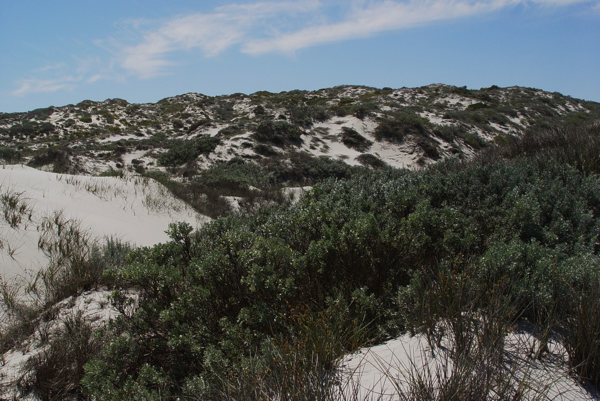
All photos are provided by Jon Boone (www.jonboone.com).
Jon Boone has kept and bred approximately 550 different species of geckos since 1981. He has also had the fortunate opportunity of finding approximately 150 different species in nature from more than 25 different countries around the world. Combining field experiences with a captive collection provides him with what he feels are unique perspectives into the lives of the animals that we all keep and study. Jon might also be one of the only gecko people in the world to have been featured in a People magazine article! His website www.jonboone.com also provides the collective community of zoologists, researchers and hobbyists with a vast number of photos from live geckos he has kept and bred over the years.
Oliver Kuepper’s fascination with geckos and other cold bloods dates back to the early 90’s when he obtained his first gecko which was a personable leo with a massive appetite. Like many of us this first gecko acted as a catalyst for something the masses just could not understand. A compulsive obsession and love for the cold-blooded blossomed from this positive interaction in his childhood and since then he has been passionate about exclusive and exotic geckos with a strong dedication to this obscure art. Currently Oli works mostly with Australian geckos. He concentrates mostly on the genus nephrurus, but is also working with other geckos genus’ such as strophurus, underwoodisaurus, phelsuma, eurodactylodes, saltarius, pachydactylus, colopus, ptenopus, uroplatus, oedura, paroedura, naultinus and leipodactylus to name a few. In addition to geckos, Oliver has also developed an affinity for certain snakes, lizards, amphibians and invertebrates, and he prides himself on cleanliness and exemplary living conditions for all of the animals he cares for. Oliver now runs a weekly blog (www.rawdogreptiles.blogspot.com) that includes animals he works with and is updated with a new reptile or amphibian species every week.
Justin Morash is a hobbyist and breeder from Nova Scotia, Canada. He has been keeping and breeding reptiles for over fifteen years. In those fifteen years he’s worn the hat of hobbyist, breeder, outreach educator, broker, and most recently zoo-keeper. While the majority of his years in the hobby was devoted to keeping and breeding monitors, pythons, and rat snakes, over the past few years he has scaled things down and now is focusing on keeping and breeding a select collection of geckos from around the world, as well as a number of other small lizard species.


LOVE the article-I’ve fallen for Pachydactylus recently and have enjoyed every species I’ve had the pleasure to care for so far. This is a very underrated genus in the hobby in my opinion.